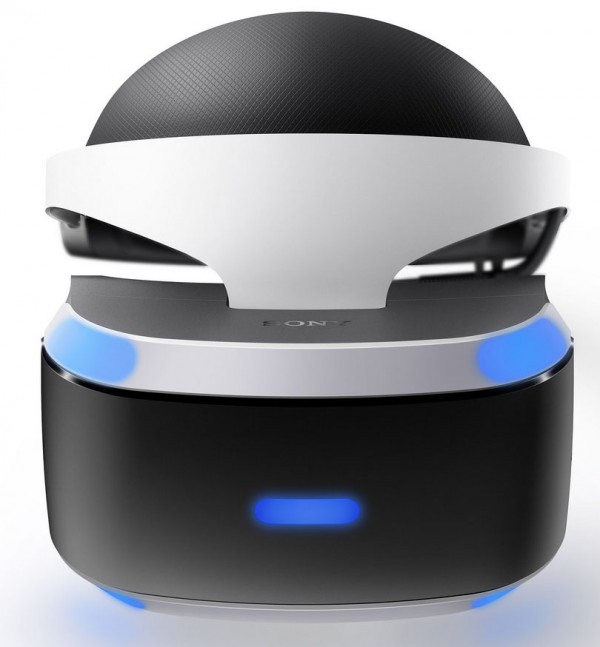
The success of PlayStation VR is going to be tied exclusively to two things – does it make you nauseous? – and how comfortable is it to strap the damn thing to your head? In fact, that statement is true for the entire VR industry as a whole. Judging from my time spent with different VR headsets at CES and later this year at E3, it’s easy to say the initial hurdle has been crossed. Don’t get me wrong, some titles can still make you nauseous (I’m looking at you, RIGS) but that’s mostly attributed to how much a developer is pushing the envelope in a given game and over time, with more powerful hardware, it’s one that will be solved.
But if I handed you an Oculus Rift and a $2,000 gaming rig, no matter how smooth the graphics are, it’s not going to stop you from wanting to rip off the headset after some time with it, due to discomfort. Ben Kuchera writing for Polygon:
It’s approachable, which is a great contrast to the super-serious stylings of other headsets. Sony did its homework. This is a comfortable headset that avoids many of the mistakes of its competitors.
In order for PS VR to break out and expand beyond a niche thing for gamers, the headset has to appear approachable. Want one for your birthday or Christmas? Better hope the next time your parents are at Best Buy that they don’t look at the box and think Skynet or something too futuristic. Sure it might be for you but your parents/partner/significant other needs to appreciate it too if they are about to part ways with $399. So it’s quite genius of Sony, that when Oculus and HTC are designing headsets that look like they came from a stealth fighter pilots suit, PS VR embraces color and an almost cartoonish design.
But the result is a headset that carries all its weight on the hard plastic strap, without sacrificing ease of adjustment. This is a large step up from the velcro on the Rift and the elastic on the Vive.
The PlayStation VR also fits around glasses much more comfortably than its contemporaries, and you can adjust the headset to fit someone’s head very quickly, which makes it easier to pass from person to person. Once you learn what you’re doing, you learn to slide the screen all the way out, depress the rear button, pull the headset over your head, and then bring the screen in via the bottom button under the front of the hardware. It’s a two-step process that feels easy rather than fiddly, and leads to a good fit every time.
If you slide the front of the hardware out all the way — and this is very important — it also gives you enough room to drink a soda while in VR.
The fact that nobody at Oculus or HTC truly took glasses wearers into consideration when designing is mind boggling enough, but to not give it thought that people will want to pass the headset around to others is pure short sightedness. A big part of VR success is going to be word of mouth and trial by others. Where the smartphone revolution was an easy one to explain at the time, both conceptually and commercially, VR faces a far more difficult battle and one that is partially solved by giving it a try.
The more time I spend with PS VR, the more clear it becomes that Sony designed it with careful thought on how everyday owners would interact with it.
Easy put on and off? Check.
Glasses wearers can easily use it without pulling off their glasses or pushing them into their eyeballs? Check.
Can snack while having the headset on (because what gamer doesn’t snack while they play)? Check, again.
On the other hand, it’s not that the Rift or Vive are bad but that they were clearly designed in a bubble with specific use scenarios, where PS VR is meant to truly be an extension of the PlayStation experience. Ben ends his piece with:
That Sony — a consumer electronics giant with decades of experience making displays, lenses, cables, processors, controllers — figured out how to make a better mousetrap shouldn’t be a surprise. That the company figured out how to make that better mousetrap cheaper than the competition, and is uniquely capable of getting it into stores and into people’s homes, is more of a surprise.
And it’s true. It’s “easy” to design something truly breathtaking and have its cost be astronomical in the process. But to design something better than your competitors and have it cost less takes discipline, expertise, and vision. Again I’ll reiterate, it’s not that the other headsets are bad and in fact, they are absolutely more powerful than PS VR. But while they put all their eggs in one basket, performance – Sony instead concentrated on creating the best consumer-centric device they could. PlayStation VR is more than able to dazzle consumers with its games but none of that would mean a damn thing if it were too expensive, which it’s not, and if it was uncomfortable to use which would turn it into that “cool thing you got that’s now collecting dust in a corner” which as it seems, it’s not.
Discuss:
If you’ve used PS VR before, did you find it comfortable?

You must be logged in to post a comment.